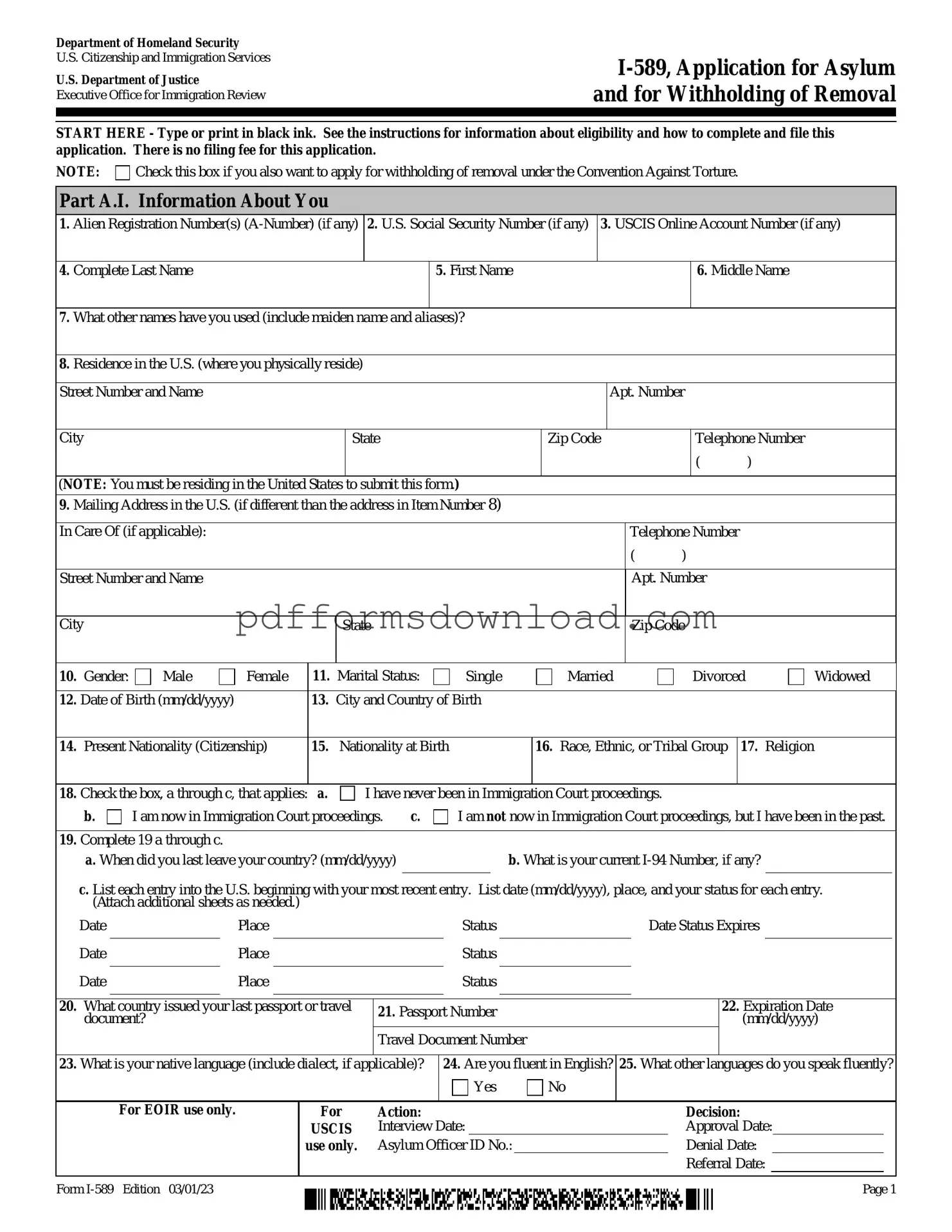What is the USCIS I-589 form?
The USCIS I-589 form, also known as the Application for Asylum and for Withholding of Removal, is a document used by individuals seeking asylum in the United States. It allows applicants to request protection based on a well-founded fear of persecution in their home country due to factors such as race, religion, nationality, political opinion, or membership in a particular social group.
Who can file the I-589 form?
Any individual who is physically present in the United States and fears persecution in their home country can file the I-589 form. This includes people who have entered the U.S. legally or illegally. However, there are specific deadlines for filing, typically within one year of arrival, unless certain exceptions apply.
What information is required on the I-589 form?
The form requires detailed personal information, including the applicant's name, address, and immigration status. It also asks for information about the applicant's family members, the reasons for seeking asylum, and any incidents of persecution experienced. Supporting documentation may be required to substantiate the claims made in the application.
How is the I-589 form submitted?
The I-589 form can be submitted by mail to the appropriate USCIS service center or filed in person at a USCIS asylum office. It is essential to ensure that the form is completed accurately and signed before submission to avoid delays in processing.
What happens after the I-589 form is submitted?
After submission, USCIS will schedule an interview with the applicant to discuss their case. The applicant will be notified of the interview date and location. During the interview, the applicant must provide evidence supporting their claim for asylum. A decision will be made based on the information provided during the interview and the details in the application.
Can I include family members on my I-589 application?
Yes, applicants can include certain family members in their I-589 application. This typically includes spouses and children under the age of 21. Family members included in the application may also be eligible for asylum if the application is approved.
What if my I-589 application is denied?
If an application for asylum is denied, the applicant may be placed in removal proceedings. At this point, the individual can appeal the decision or seek other forms of relief from removal. It is crucial to consult with an immigration attorney to explore available options and understand the implications of a denial.
Is there a fee to file the I-589 form?
There is no filing fee for the I-589 form. This fee waiver is in place to ensure that individuals fleeing persecution can access the asylum process without financial barriers. However, applicants may incur costs for obtaining supporting documents or legal assistance.
How long does it take to process the I-589 form?
The processing time for the I-589 form can vary significantly based on several factors, including the caseload of the USCIS office and the complexity of the case. Generally, applicants can expect to wait several months for an interview and a decision. It is advisable to check the USCIS website for current processing times.
Can I work while my I-589 application is pending?
Yes, individuals who have filed an I-589 application can apply for work authorization after their application has been pending for 150 days. They must submit Form I-765, Application for Employment Authorization, to request the ability to work while awaiting a decision on their asylum claim.
